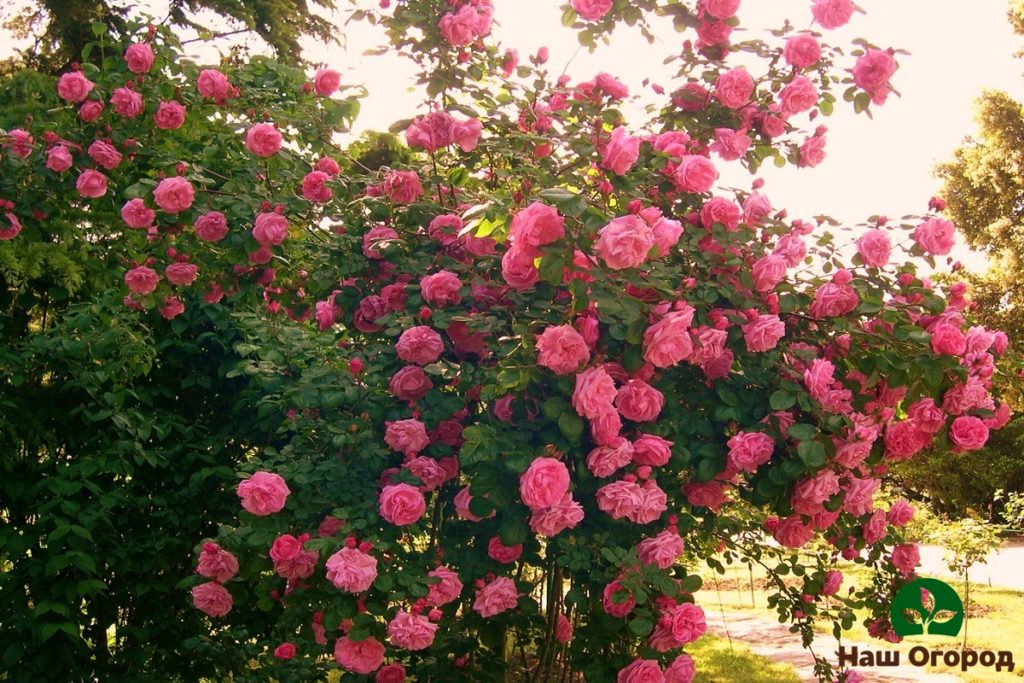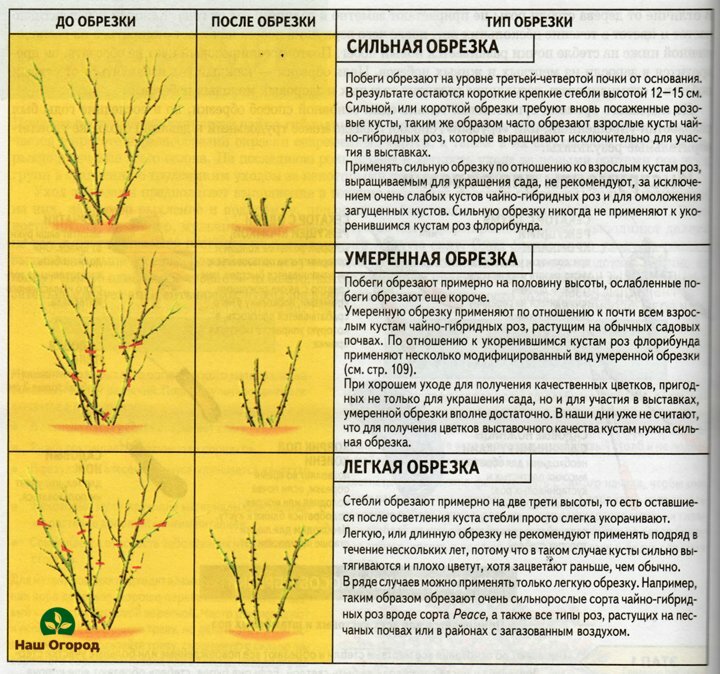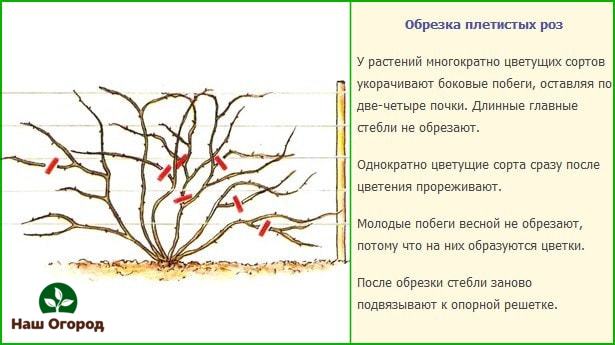We cut the roses right! Key features and secrets.
Pruning a rose.
One of the extremely important processes in the agricultural technology of flowering plants is pruning - a technique due to which the growth and development, as well as the duration of their flowering, are properly regulated. The composition of the process is primarily the thinning of healthy shoots from those that, for one reason or another, have already become redundant or simply died, as well as shortening those that remained and were not pruned. This, in turn, allows the lower buds to germinate, which favorably affects the overall flowering activity of the bush.

Roses need to be pruned regularly every year. In this case, all, without exception, branches of an unnatural appearance, infected and sick, as well as, in principle, dead ones, should be removed. Only straight shoots should be left on the bushes, which are evenly spaced. Their total amount usually depends on the variety of the plant, as well as on how strong it grows.
Repair roses, in contrast to their park and wild-growing counterparts, begin to bloom after about 35 days after the moment when the shoots begin to grow. Such a high rate and intensity of flowering of remontant roses was adopted from their ancestors - evergreen roses.

In the spring, you should cut out all the weak and freezing shoots from the remontant roses that have survived the cold, and the surviving ones should be shortened. Do not delay with the process, otherwise the predominant number of buds will begin to germinate, and unevenly - if growth activity is noted in the upper part, then in the lower part the buds will most likely remain dormant. Depending on the length of the overwintered shoot left over from last year, the number of new shoots formed, and therefore flowers, is also determined. Thus, over time, they began to distinguish such types of pruning as short, medium and long. In the process of the latter, all the buds, without exception, should be left on the shoot, but this is not always advisable - depending on the climate, the lower buds often turn out to be deeply dormant, especially closer to the vaccination site. In view of this, they become useless, since they will no longer contribute to the formation of replacement shoots - a future replacement for those shoots that will fade the next year. Depending on the shortening, the number of replacing shoots depends, however, flowering in this case becomes less, but they usually predominate in length, as well as the large size of flowers, which is an advantage in comparison with long pruning.

In order to obtain large flowers as a result, the method of short and medium pruning is used on the pedicels. Intensive growth of bushes can be achieved by leaving at least 7 buds at the beginning of the flowering period for long pruning, about 5 for medium pruning, respectively, and at least 2 buds for short pruning. Medium pruning is the best option, as it contributes to the most successful combination of flowering shoots along with replacing ones. The disadvantage of short pruning is the risk of the formation of only non-flowering shoots, so the middle one turns out to be the most popular among summer residents.
A shoot growing from an ocellated eye in such groups of roses as floribunda and hybrid tea forms a multi-stem bush at a fairly high rate. By about the middle of summer, in the vast majority of varieties, such a bush grows up to 40 centimeters and begins to bloom intensively.After the process of cutting flowers from those buds that remain, shoots of the second order are already beginning to grow. They can produce normal flowers even in cool and short summers. Medium pruning is most suitable for hybrid tea roses, but short pruning should not be neglected if you want flowers with long stems.
Floribunda is widely used, as we already know, for the most part for decorative purposes in the summer cottage, such roses are used as decoration in the composition of certain compositions. Here pruning plays a role - roses should be formed in the form of voluminous bushes with multiple branches. Do not forget to calibrate the flowers by size, as shorter ones, as a rule, should be in the foreground of the composition, while flowers with longer stems harmoniously look in the background in relation to the viewer.
The blooming period of climbing roses falls the next year if they safely endure the winter cold. Due to their increased vulnerability to low temperatures, they should be cut to the very base after flowering has come to an end. In this case, the nutrition of the entire bush is aimed only at the subsequent development of young vegetative shoots.
Rose pruning is an extremely important procedure and agronomic technique aimed at improving the dynamics of plant development in the future. This process should not be neglected, since leaving dry and diseased branches on the bush in the process of life, you can endanger the rose. Perform visual analysis in a timely manner for the presence of unnecessary elements, remove them with a sharp knife so as not to damage the healthy plant.

